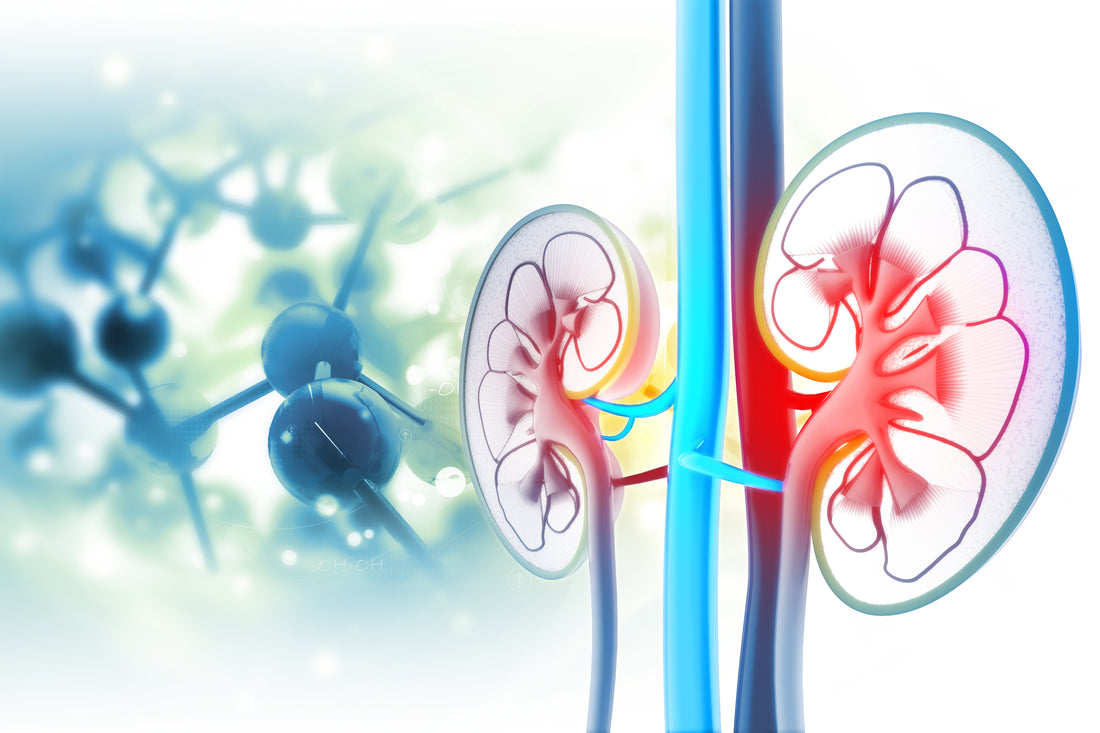
Understanding Diuretic Herbs and Their Impact on Kidney Health
Diuretic herbs have long been recognized for their ability to increase urine production and aid in fluid elimination from the body. Understanding their impact on kidney health is essential for making informed choices about incorporating these herbs into your wellness routine. In this article, we will explore the renal pathophysiology involved in the diuretic process, making it easy to comprehend for individuals of all backgrounds.
1. Kidney Blood Flow:
Diuretic herbs support renal blood flow by dilating the afferent arteriole, which enhances the perfusion of the glomerulus. This increased blood flow improves the filtration process, promoting optimal kidney function. Herbs such as Juniper berry, Ginkgo, and Hawthorn are known for their beneficial effect on kidney blood flow.
2. Glomerular Filtration:
Within the kidneys, blood is filtered through tiny blood vessels called glomeruli. Diuretic herbs play a role in supporting glomerular filtration by influencing pressure and filtration rates. They aid in the filtration of fluid and solutes by promoting hydrostatic pressure in the glomerular capillaries. Juniper berry, Astragalus root, Rehmannia, Dandelion, and Corn silk are notable herbs that contribute to effective glomerular filtration.
3. Proximal Tubule Reabsorption:
After filtration, fluid enters the proximal tubule, where water and electrolytes are reabsorbed back into the bloodstream. Diuretic herbs can inhibit the reabsorption of sodium and chloride ions in the proximal tubule, leading to increased excretion of these electrolytes into the urine. Herbs like Corn silk, Horsetail, and Celery seed are recognized for their impact on proximal tubule reabsorption.
4. Loop of Henle:
The loop of Henle plays a crucial role in creating a concentration gradient in the kidneys, which is necessary for water reabsorption. Diuretic herbs can influence the function of the loop of Henle by inhibiting the reabsorption of sodium, chloride, and water. This results in increased excretion of these substances in the urine. Dandelion, Parsley leaf, and Nettle leaf are among the herbs known for their effects on the loop of Henle.
5. Distal Tubule and Collecting Duct:
In the distal tubule and collecting duct, further reabsorption and secretion of electrolytes occur, shaping the final composition of urine. Diuretic herbs can impact these structures by promoting the excretion of sodium, potassium, and water. Buchu leaf, Uva ursi, and Horsetail are notable herbs that influence the distal tubule and collecting duct.
Diuretic herbs offer valuable support for renal pathophysiology and healthy urine production. By understanding their effects on different stages of kidney function, you can make informed decisions about incorporating these herbs into your wellness practices. Remember to seek guidance from healthcare professionals or herbalists who specialize in herbal medicine before introducing diuretic herbs into your routine. They can provide personalized advice based on your specific needs and health considerations. Prioritize your well-being by making safe and effective choices for optimal kidney health.
1. Kidney Blood Flow:
Diuretic herbs support renal blood flow by dilating the afferent arteriole, which enhances the perfusion of the glomerulus. This increased blood flow improves the filtration process, promoting optimal kidney function. Herbs such as Juniper berry, Ginkgo, and Hawthorn are known for their beneficial effect on kidney blood flow.
2. Glomerular Filtration:
Within the kidneys, blood is filtered through tiny blood vessels called glomeruli. Diuretic herbs play a role in supporting glomerular filtration by influencing pressure and filtration rates. They aid in the filtration of fluid and solutes by promoting hydrostatic pressure in the glomerular capillaries. Juniper berry, Astragalus root, Rehmannia, Dandelion, and Corn silk are notable herbs that contribute to effective glomerular filtration.
3. Proximal Tubule Reabsorption:
After filtration, fluid enters the proximal tubule, where water and electrolytes are reabsorbed back into the bloodstream. Diuretic herbs can inhibit the reabsorption of sodium and chloride ions in the proximal tubule, leading to increased excretion of these electrolytes into the urine. Herbs like Corn silk, Horsetail, and Celery seed are recognized for their impact on proximal tubule reabsorption.
4. Loop of Henle:
The loop of Henle plays a crucial role in creating a concentration gradient in the kidneys, which is necessary for water reabsorption. Diuretic herbs can influence the function of the loop of Henle by inhibiting the reabsorption of sodium, chloride, and water. This results in increased excretion of these substances in the urine. Dandelion, Parsley leaf, and Nettle leaf are among the herbs known for their effects on the loop of Henle.
5. Distal Tubule and Collecting Duct:
In the distal tubule and collecting duct, further reabsorption and secretion of electrolytes occur, shaping the final composition of urine. Diuretic herbs can impact these structures by promoting the excretion of sodium, potassium, and water. Buchu leaf, Uva ursi, and Horsetail are notable herbs that influence the distal tubule and collecting duct.
Diuretic herbs offer valuable support for renal pathophysiology and healthy urine production. By understanding their effects on different stages of kidney function, you can make informed decisions about incorporating these herbs into your wellness practices. Remember to seek guidance from healthcare professionals or herbalists who specialize in herbal medicine before introducing diuretic herbs into your routine. They can provide personalized advice based on your specific needs and health considerations. Prioritize your well-being by making safe and effective choices for optimal kidney health.
